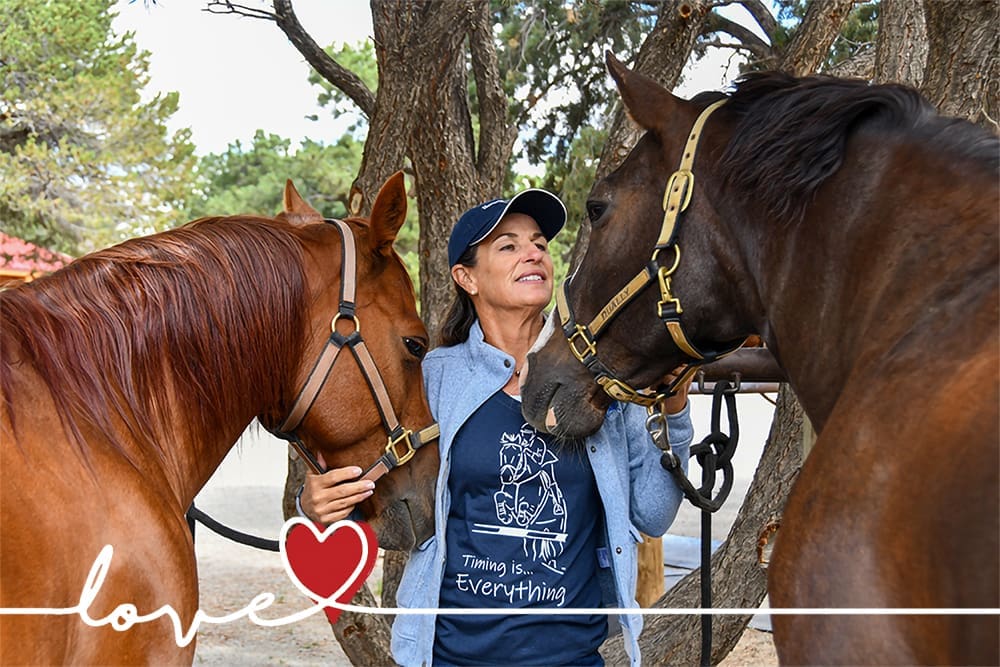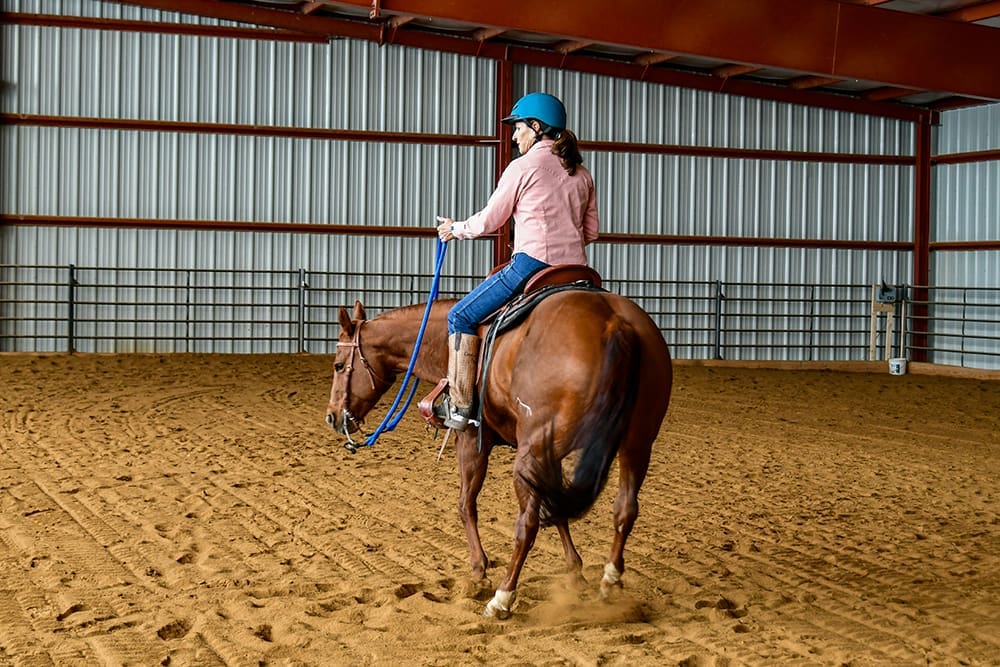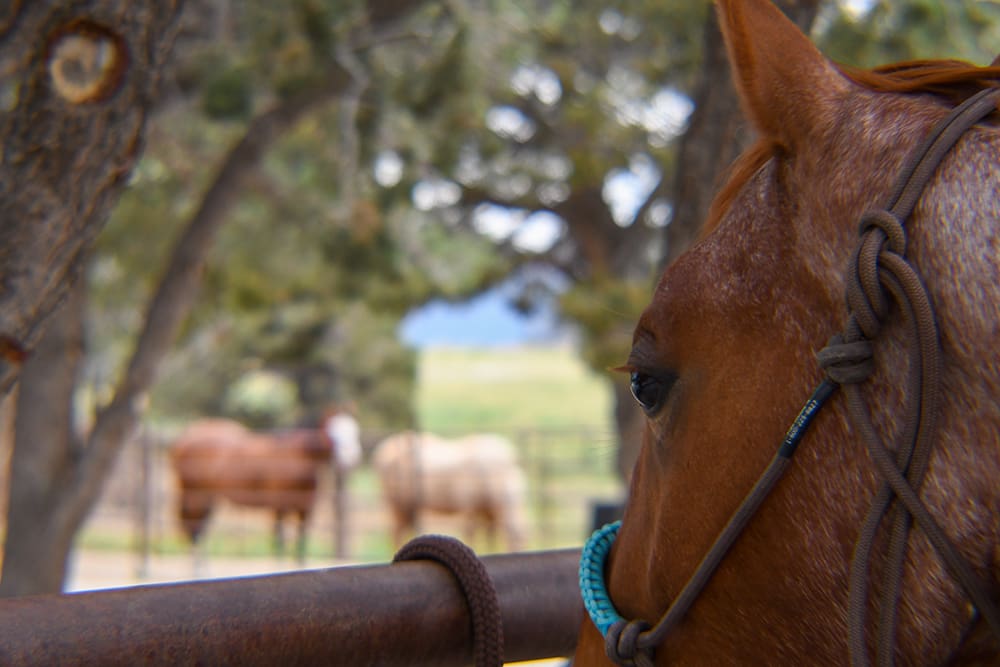On the Rail: Teaching Horse Behavior to Youth
By Julie Goodnight
Q: Dear Julie, I am a big believer in natural horsemanship and how effective it is to handle horses with an understanding of their natural behaviors. I’d like to instill these principles into my teaching and I wonder if you have any ideas for getting my youth students interested in studying horse behavior? Seems like all they want to do is ride! ~ Mary
A: Dear Mary, I applaud your efforts to instill good principles in your students and an awareness of what life is like from the horse’s point of view. I have found it fascinating to study horse behavior even as a child when I had no idea I was studying it. Learning behavior through observation is a valuable tool but I think there are lots of ways to stimulate their interest. One of my most popular demonstrations is about reading the language of horses and I think that once you give people (and for the record, I don’t teach kids much differently than adults) clues to look for in understanding and “reading” a horse’s language, they love it. Even non-horse people enjoy watching horses when they have a basic understanding how they communicate. Horses communicate primarily with postures, gestures and body language; however, some of their communication is an audible language. I find that once people become aware of this almost anyone, regardless of their experience level, can start understanding the horse’s language. Just by pointing out a few basics your students can observe a group of horses and start calling out the communications they see; “Back off!”, “Gee that looks interesting”, “Warning, warning!”, “Come here and feed me!”, “Stay away from me”. “Do you want to be friends?”. I have written much about behavior and the Training Library on my website has hundred of articles that elaborate on both the instinctive and learned behaviors of horses. A few of the fundamentals I would teach before playing this basic observation game with your students include postures, gestures and audible expressions. A horse’s head is entirely indicative of his emotional state—when the head goes up he is tensing, when the head lowers he is relaxing. As you ride and as you observe horses, watch their head level for indicators on how they are feeling. The same thing is true of his tail—all the way up shows excitement/flight/prideful behavior; a cowering horse will tuck his tail like a dog. Horses have numerous gestures—some of them we may not want to know about! The head drop/bob shows submission, ears back shows anger, baring teeth is a threatening gesture. Horses gesture a lot with their feet— cocking a foot can be a kick threat; pawing means “I’m frustrated and I want to be moving”; stomping feet means “that makes me mad!”. A toss of the head with the nose moving in a circular motion is a defiant gesture that teenagers would get in trouble for doing. Horses have many gestures that have meaning if you know what to look for. Horses are limited to just a few audible expressions that they use to communicate; the squeal, whinny, nicker, and snort. Each has a specific meaning and I find students of all ages and even non-horse people are interested to learn about these behaviors and interpreting them as they watch horses.
- Squeal: The squeal is a high-pitched outcry, which acts as a defensive warning or threat. It tells another animal to be ready for a stronger reaction if further provoked. Squeals are typical during aggressive interactions between horses, during reproductive encounters when the mare protests the stallion’s advances, and when a pre- or early-lactating mare objects to being touched anywhere near her sore teats.
- Nicker: A nicker is a guttural, low-pitched pulsating expression that means “come closer to me”. It occurs most often just prior to being fed and announces the horse’s presence and anticipation. Stallions will also nicker at mares during a reproductive encounter and seems to signal the stallion’s interest in the mare. Mares typically give a third type of nicker to their young foals when the mare is concerned about the foal.
- Whinnies or Neighs: Whinnies or neighs are high-pitched calls that begin like a squeal and end like a nicker. It is the longest and loudest of horse sounds and is distinctive for each horse (you can learn to recognize the sound of your horse’s whinny). The whinny seems to be a searching call that facilitates social contact from a distance. It’s a form of individual recognition and most often occurs when a foal and mare or herd peer companions are separated or when a horse is inquisitive after seeing a horse in the distance.
- Snorts and Blows: Snorts and blows are produced by forceful expulsion of air through the nostrils. The snort has a rattling sound, but the blow does not. The snort and blow communicate alarm and apparently serves to alert other horses. The snort may also be given when a horse is restless but constrained; in this case, it should be taken seriously as a sign that the horse is feeling trapped and alarmed and may become reactive.
Getting your students started on understanding the horse’s communicative behavior is a good place to begin. Once they are engaged, the sky’s the limit on the lessons you can teach and the lessons that horses offer us every day. Studying their emotional behaviors, the seven categories of instinctive behaviors of horses, doing groundwork exercises to build a better relationship with the horse and studying the herd dynamics we see every day will be as interesting to your students, as it is to you.



